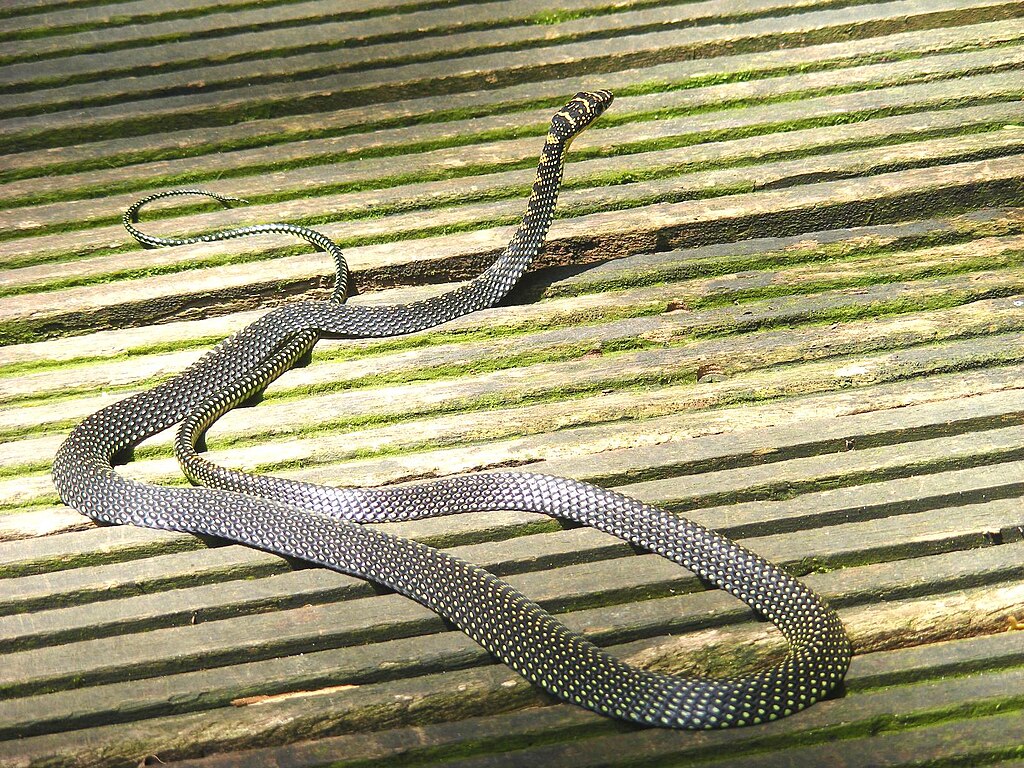For centuries, humans have marveled at the various ways animals have evolved to move through their environments. While birds soar through skies and fish glide through water, there exists a remarkable reptile that defies expectations by seemingly flying through the air despite having no wings or limbs. The paradise tree snake, or Chrysopelea paradisi, has developed an extraordinary ability to glide through the air by transforming its body into a makeshift wing. Through a fascinating mechanism involving rib expansion, these serpents can launch themselves from treetops and navigate precisely to landing spots over 100 feet away. This article explores the remarkable adaptation, mechanics, and evolutionary significance of this flying serpent that turns the impossibility of a snake in flight into a breathtaking reality.
The Remarkable Paradise Tree Snake
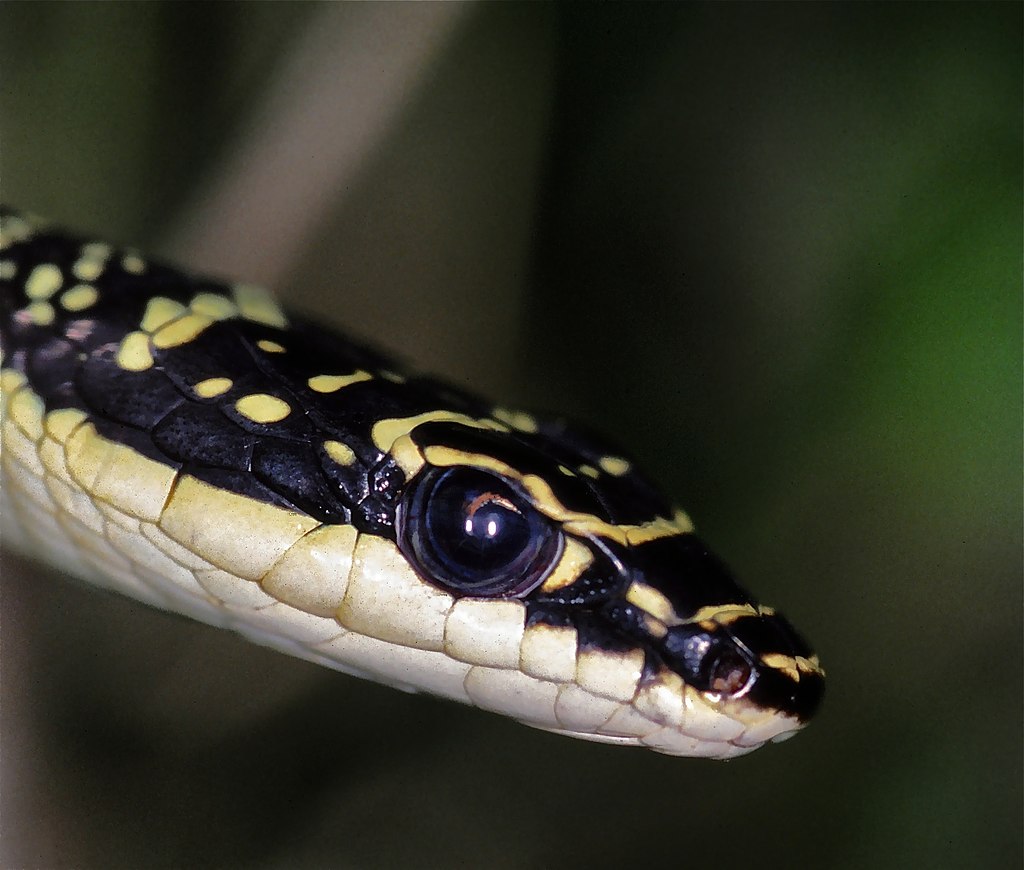
The paradise tree snake (Chrysopelea paradisi) belongs to a genus of five species of arboreal colubrids native to Southeast Asia, collectively known as flying snakes. With its slender body adorned in vibrant patterns of green, black, and sometimes yellow, this species typically grows to about 3-4 feet in length. Unlike most snakes that remain earthbound or confined to trees, these reptiles have developed the extraordinary ability to glide through the air, traveling remarkable distances between trees in their tropical forest habitats. Their arboreal lifestyle and remarkable locomotion method make them unique among the approximately 3,900 snake species worldwide. They primarily inhabit the dense rainforests of Thailand, Malaysia, Singapore, Indonesia, and the Philippines, where their gliding ability provides a significant advantage for hunting, escaping predators, and navigating their complex three-dimensional environment.
The Physics of Snake Flight

The paradise tree snake’s gliding ability is a masterclass in aerodynamics that has fascinated scientists for decades. Unlike true flight, which involves powered propulsion, these snakes utilize controlled falling—a form of passive locomotion that relies on gravity and precise body manipulations. When a flying snake launches itself, its body literally becomes an airfoil, creating lift in much the same way as an airplane wing. Remarkably, studies have shown that these snakes can achieve glide ratios (horizontal distance traveled versus vertical distance fallen) of up to 13:1, which surpasses many other gliding animals. High-speed photography reveals that the snake maintains remarkable control throughout its glide, with the ability to make mid-air turns and adjustments to reach its target. Even more impressive is that paradise tree snakes achieve this aerodynamic performance with a body shape that seems inherently unsuited for flight, demonstrating nature’s extraordinary capacity for evolutionary innovation.
The Mechanism Behind Rib Expansion
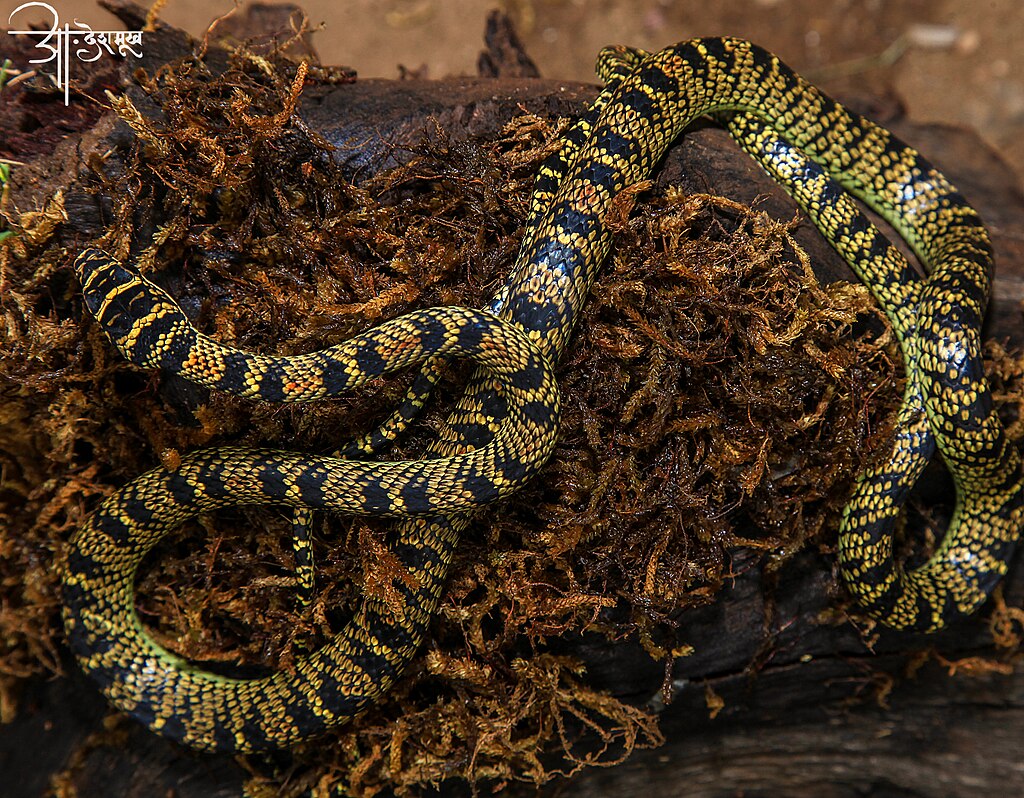
The secret to the flying snake’s aerial abilities lies in its remarkable anatomical adaptation—specifically, its highly mobile ribs and specialized musculature. Unlike human ribs, which have limited mobility, the paradise tree snake possesses ribs that can extend outward nearly perpendicular to its spine, controlled by specialized intercostal muscles. When preparing to glide, the snake contracts these muscles, causing its normally cylindrical body to flatten dramatically, nearly doubling its width and creating a concave bottom surface that resembles a crude wing. This transformation is facilitated by unusually flexible connections between the ribs and vertebrae, allowing for a range of motion not seen in non-gliding snake species. The skin between the expanded ribs stretches tight, creating a continuous aerodynamic surface that effectively captures air and generates lift. This remarkable adaptation showcases evolutionary ingenuity, as it repurposes existing anatomical structures (ribs evolved primarily for protection and locomotion) for an entirely new mode of movement.
The Step-by-Step Gliding Process
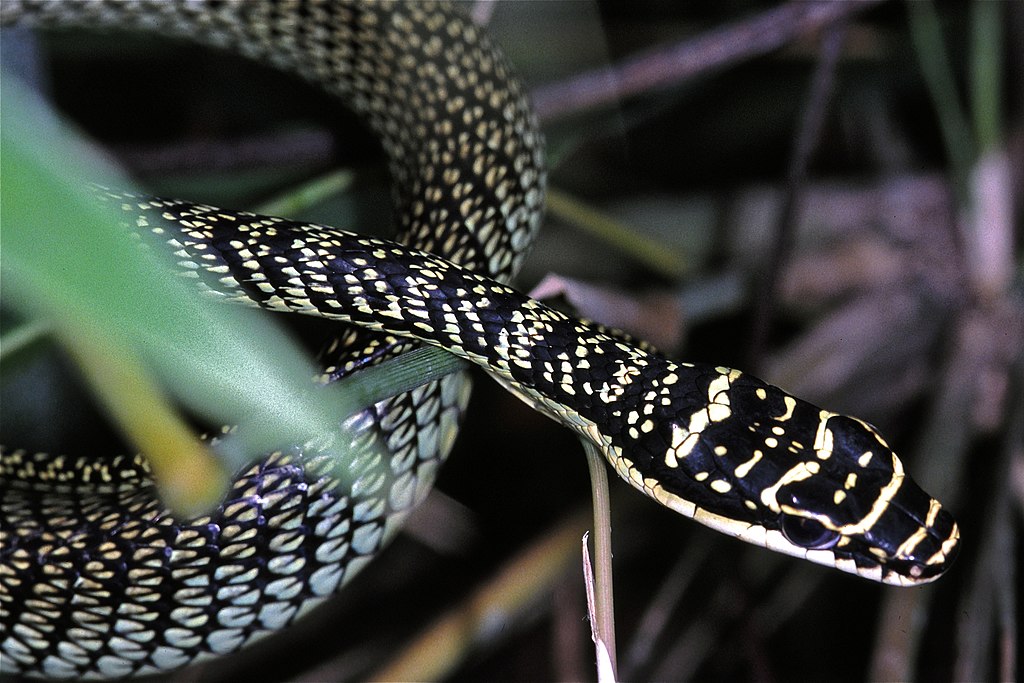
The paradise tree snake’s aerial journey begins with careful preparation at the launch point, typically a high branch. First, the snake dangles its body in a J-shape, with its head and upper body forming a horizontal platform while its tail anchors it to the branch. When ready to glide, it propels itself upward and outward using its powerful muscles, launching into the air with surprising force. Immediately after takeoff, the snake flattens its body through the previously described rib expansion, creating its wing-like form. What follows is perhaps most remarkable—the snake begins a series of undulating, side-to-side movements, resembling an S-shape when viewed from above. These serpentine motions aren’t random but serve to stabilize the glide and potentially generate additional lift through a phenomenon similar to how a thrown paper plate maintains its flight. Finally, as the snake approaches its landing target, it extends forward, using subtle body adjustments to control its descent rate and prepare for impact, usually on another tree trunk or branch.
Scientific Research and Discovery
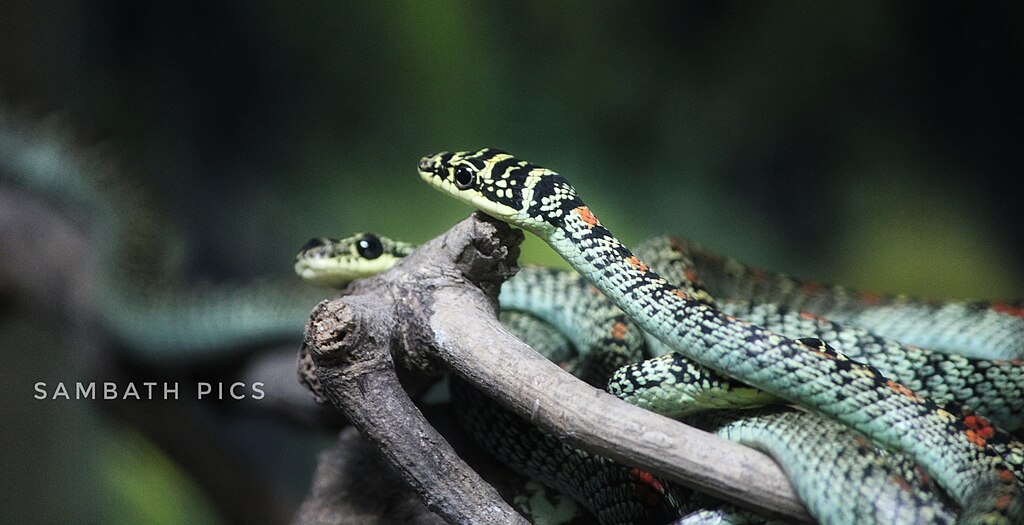
The flying ability of paradise tree snakes has been the subject of intensive scientific research, particularly in recent decades. While accounts of flying snakes date back centuries in folklore, serious scientific study began in the early 20th century, with comprehensive investigations emerging in the 1990s through the pioneering work of biologist Jake Socha. Using high-speed cameras, wind tunnel tests, and 3D motion capture technology, Socha and colleagues have documented the precise mechanisms of the snake’s gliding behavior. Their research has revealed that these snakes achieve remarkable aerodynamic efficiency despite their seemingly unsuitable body shape. In 2020, a breakthrough study published in Nature Physics used computational fluid dynamics to demonstrate how the snake’s unique cross-sectional shape actually creates vortices that enhance lift during flight. Ongoing research continues to investigate the neurological control mechanisms that allow the snake to make split-second adjustments during its aerial journey, with potential applications in the design of novel robotic systems and aircraft.
Evolutionary Development of Gliding
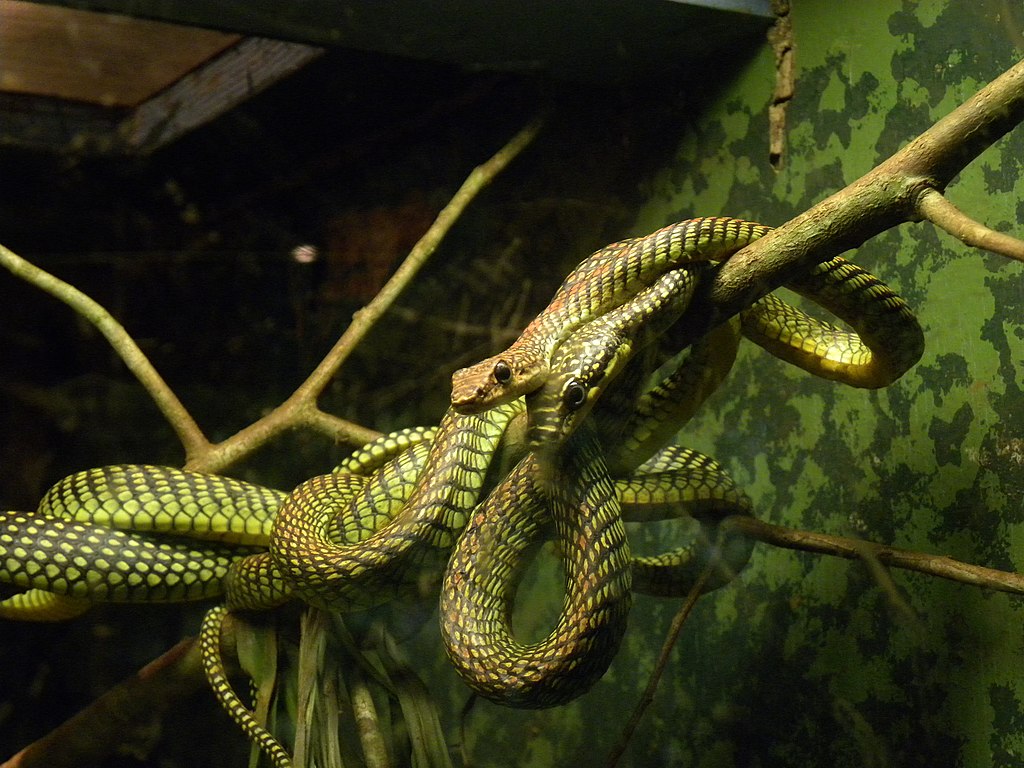
The evolution of gliding in paradise tree snakes represents a fascinating example of convergent evolution, where similar traits develop independently in unrelated species. Scientists believe the gliding adaptation likely evolved as a response to the fragmented canopy environment of Southeast Asian rainforests, where the ability to move between trees without descending to the ground provides significant survival advantages. Fossil evidence suggests the Chrysopelea genus diverged from other colubrid snakes approximately 15-20 million years ago, though the exact timeline for the development of gliding remains uncertain. Interestingly, the pathway to this adaptation was facilitated by pre-adaptations already present in the snake’s ancestors: mobile ribs used for locomotion and tree-climbing abilities. Comparative studies with related non-gliding species reveal gradual anatomical differences in rib mobility and musculature, suggesting a step-by-step evolutionary process rather than a sudden development. This evolutionary innovation demonstrates how natural selection can repurpose existing structures for entirely new functions when environmental pressures create the right conditions.
Ecological Advantages of Aerial Movement
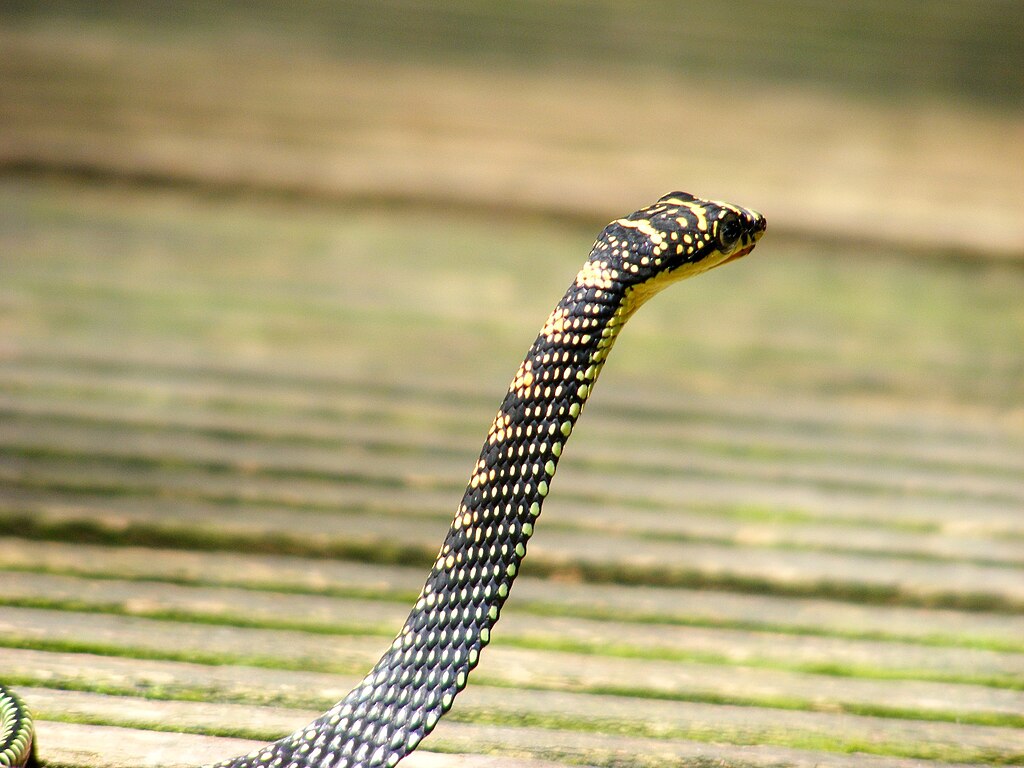
The paradise tree snake’s gliding adaptation provides numerous ecological advantages that have ensured its evolutionary success. Most obviously, gliding allows these snakes to travel efficiently between trees without the risk of descending to the forest floor, where they would be more vulnerable to predators and less adapted for movement. This aerial mobility gives them access to a greater range of hunting territories, allowing them to pursue prey across gaps that would otherwise be impassable. Additionally, the ability to glide serves as an effective escape mechanism when threatened, enabling rapid retreats from danger. Research indicates that these snakes can make strategic decisions about glide trajectories, often choosing paths that maximize distance from threats while minimizing energy expenditure. Another significant advantage is the energy efficiency of gliding compared to climbing down and up trees, with studies suggesting energy savings of up to 60% when gliding between points of equal height. In the competitive environment of tropical rainforests, these combined advantages have allowed flying snakes to occupy a unique ecological niche.
Comparison with Other Gliding Animals
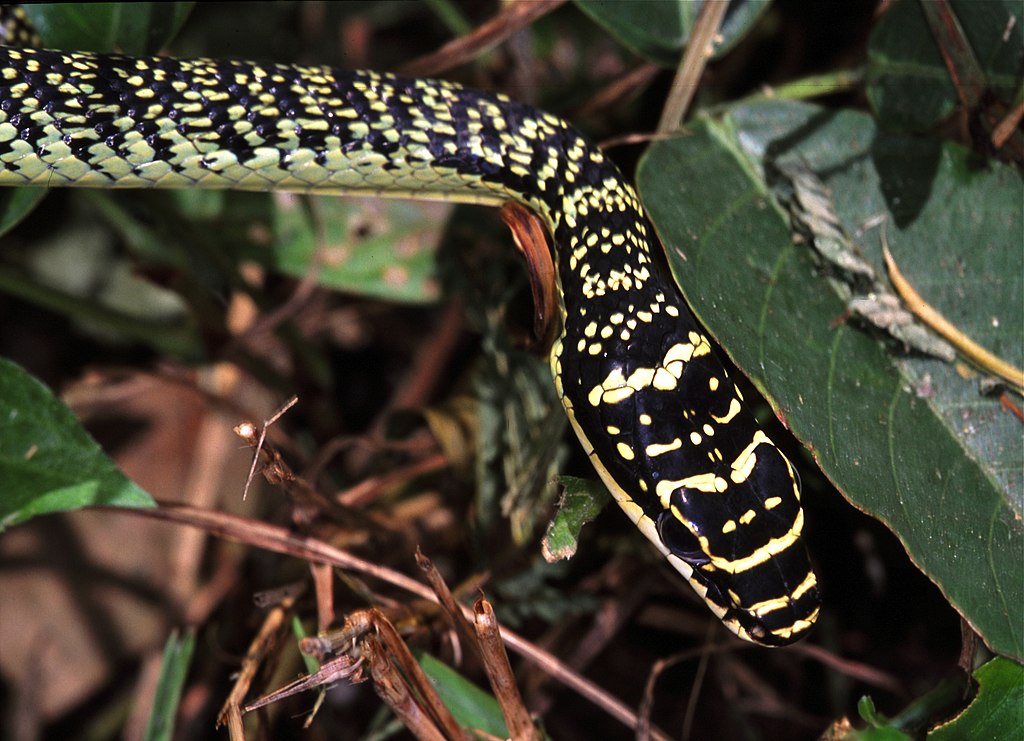
The animal kingdom features several species that have independently evolved gliding abilities, yet the paradise tree snake stands out as particularly remarkable. Unlike flying squirrels, colugos, or flying frogs that use membranes or webbed appendages, the snake has no specialized structures dedicated to flight—instead completely repurposing its existing anatomy. When compared to other gliders, the snake’s performance is impressive; while flying squirrels typically achieve glide ratios of 3:1, paradise tree snakes can reach ratios exceeding 10:1 under optimal conditions. Another distinguishing feature is the snake’s active body undulation during flight, which differs from the relatively static positioning of most mammalian gliders. The paradise tree snake also demonstrates greater maneuverability than many other gliding species, capable of executing mid-air turns of up to 90 degrees to adjust its landing trajectory. Perhaps most significantly, while most gliding animals evolved from limbed ancestors, giving them a more obvious pathway to aerial adaptations, the snake’s limbless body represents a more radical evolutionary departure, making its successful adaptation all the more extraordinary.
Behavioral Aspects of Gliding
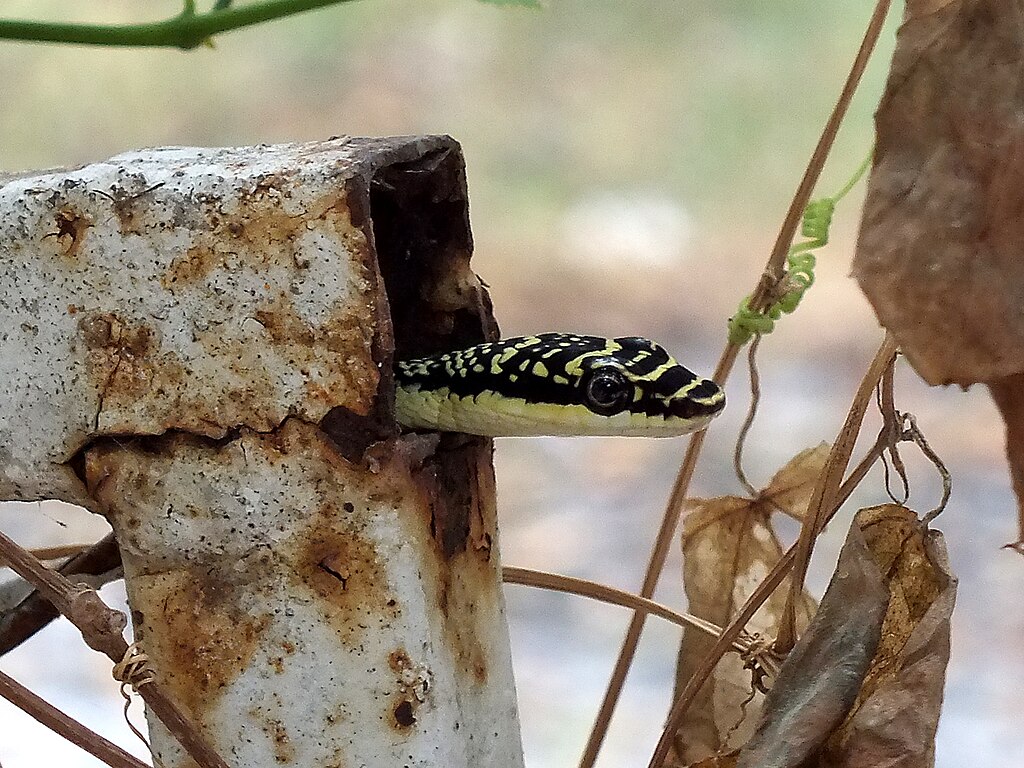
Beyond the mechanical aspects of gliding, paradise tree snakes exhibit fascinating behavioral patterns related to their aerial abilities. Researchers have observed that these snakes appear to make calculated decisions before launching, often spending time seemingly assessing distances and potential landing spots. They display a remarkable ability to judge gliding distances, rarely initiating flights they cannot successfully complete. Interestingly, their gliding behavior varies with age and experience—juvenile snakes typically make shorter, less complex glides, suggesting a learning component to mastering this skill. Field studies have documented that paradise tree snakes prefer certain environmental conditions for gliding, showing increased activity during moderate temperatures and avoiding glides during heavy rain or high winds that might compromise their control. They also demonstrate tactical decision-making, sometimes using gliding as an ambush technique to surprise prey on adjacent trees. These behavioral observations highlight that the snake’s aerial adaptation involves not just physical specialization but also cognitive and behavioral components that have co-evolved with its unique locomotion method.
Hunting and Diet While Airborne

Contrary to some popular misconceptions, paradise tree snakes do not capture prey while in flight—their gliding is primarily used for transportation and escape rather than mid-air hunting. However, their aerial abilities are intimately connected to their feeding strategy. These snakes are active diurnal hunters specializing in arboreal prey, with a diet consisting primarily of lizards (particularly geckos and skinks), small birds, bats, and occasionally small rodents. Their gliding capability allows them to access isolated hunting grounds and pursue prey across gaps in the canopy that would otherwise serve as natural barriers. After spotting potential prey on a distant tree, a flying snake can quickly glide to that location and initiate a hunt without alerting its target through ground movement. Paradise tree snakes possess mild venom delivered through enlarged rear fangs, which they use to subdue prey after capture. This venomous adaptation complements their gliding ability, as it allows them to quickly immobilize captured prey before it can escape in the complex three-dimensional environment of the forest canopy.
Human Interactions and Cultural Significance

Throughout their range in Southeast Asia, flying snakes have featured prominently in local folklore and cultural traditions for centuries. In some communities, their seemingly supernatural ability to “fly” has led to mystical associations, with various beliefs attributing spiritual significance or magical properties to these serpents. Despite their mild venom, paradise tree snakes pose virtually no threat to humans, as their rear-fanged delivery system makes it difficult to envenomate large animals, and their temperament is generally non-aggressive toward humans. In contemporary times, these remarkable reptiles have become popular subjects in wildlife documentaries and nature photography, with their gliding displays capturing the imagination of viewers worldwide. Unfortunately, like many rainforest species, flying snakes face increasing pressure from habitat destruction as deforestation continues across Southeast Asia. Conservation efforts focused on preserving the primary forests they inhabit are essential for ensuring the survival of these extraordinary reptiles and the continued study of their remarkable adaptations.
Biomimicry and Engineering Applications
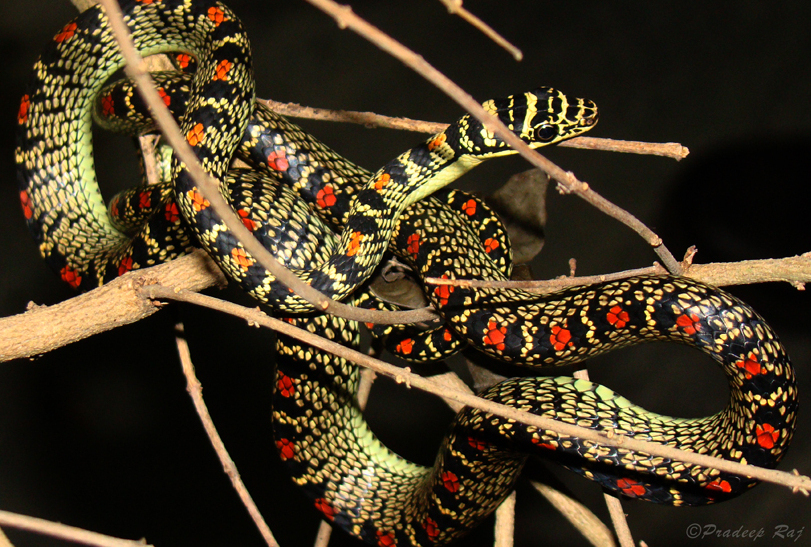
The unique gliding mechanism of paradise tree snakes has drawn significant interest from engineers and designers seeking bio-inspired solutions to human challenges. Researchers studying robotic locomotion have developed snake-inspired robots that mimic the undulating movements these serpents use during flight, potentially creating systems that can navigate complex environments more effectively than traditional robots. Aerospace engineers have examined the snake’s ability to create lift with its flattened body shape, which challenges conventional aerodynamic principles and suggests new approaches to aircraft design. The snake’s remarkable stability during gliding, despite its unconventional form, has informed research into control systems for unpowered gliding vehicles and drones. Materials scientists have also studied the mechanical properties of the snake’s ribs and skin, which must withstand significant forces during expansion and aerial maneuvers, potentially inspiring new flexible structural materials. These biomimetic applications demonstrate how nature’s solutions, refined through millions of years of evolution, continue to provide valuable insights for human innovation and technological development.
Conservation Challenges and Future Research
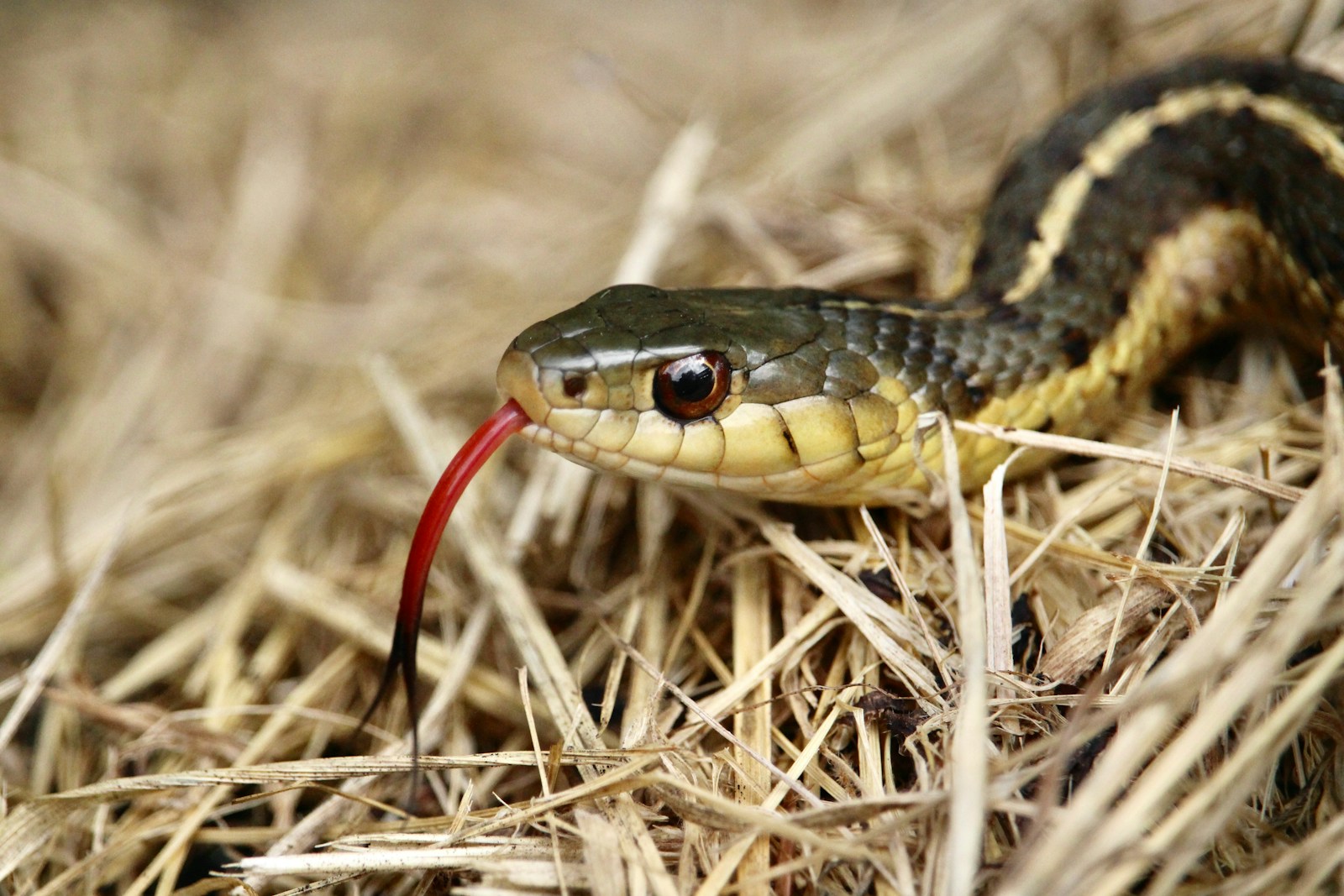
Paradise tree snakes and their remarkable gliding adaptation face several conservation challenges that could threaten their future. Primary among these is habitat loss, as the tropical forests they depend on are rapidly being converted to agricultural land and urban development throughout Southeast Asia. Climate change presents additional threats, potentially altering the forest structure and environmental conditions these specialized gliders have evolved to navigate. While not currently listed as endangered, several flying snake species have experienced population declines in regions with extensive deforestation. Future research priorities include more comprehensive population assessments across their range and better understanding of their specific habitat requirements. From a scientific perspective, researchers continue to investigate unanswered questions about these remarkable reptiles, including the neuromuscular control mechanisms that enable precise aerial maneuvers, the developmental process by which young snakes learn to glide, and potential variations in gliding techniques among different Chrysopelea species. Advanced technologies like miniaturized accelerometers and high-resolution 3D imaging promise to reveal even more secrets about these extraordinary flying serpents in coming years.
Conclusion

The paradise tree snake represents one of nature’s most extraordinary evolutionary innovations—a limbless reptile that conquered the air through ingenious adaptation of its existing anatomy. Through the remarkable expansion of its ribs and sophisticated control of its body movements, this serpent transformed the physical constraints of its snake form into an advantage, achieving what seems impossible: a flying snake. As scientists continue to unravel the biomechanical secrets behind this adaptation, the flying snake stands as a powerful reminder of nature’s boundless creativity and the remarkable pathways evolution can take when ecological pressures create the right conditions. In a world increasingly dominated by human technology, the paradise tree snake offers a humbling lesson that some of the most sophisticated engineering solutions have existed in nature all along, waiting for us to discover and learn from them.

